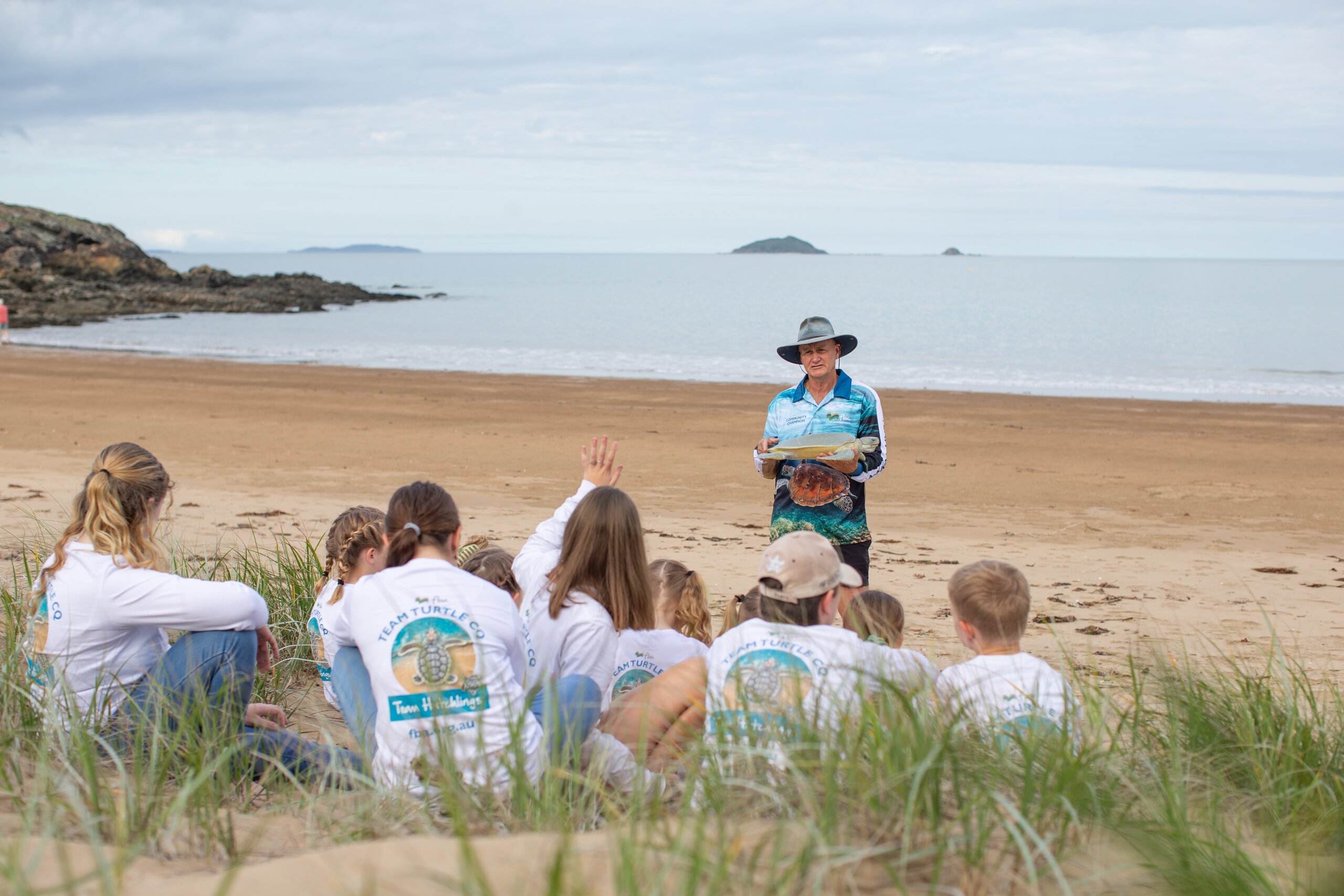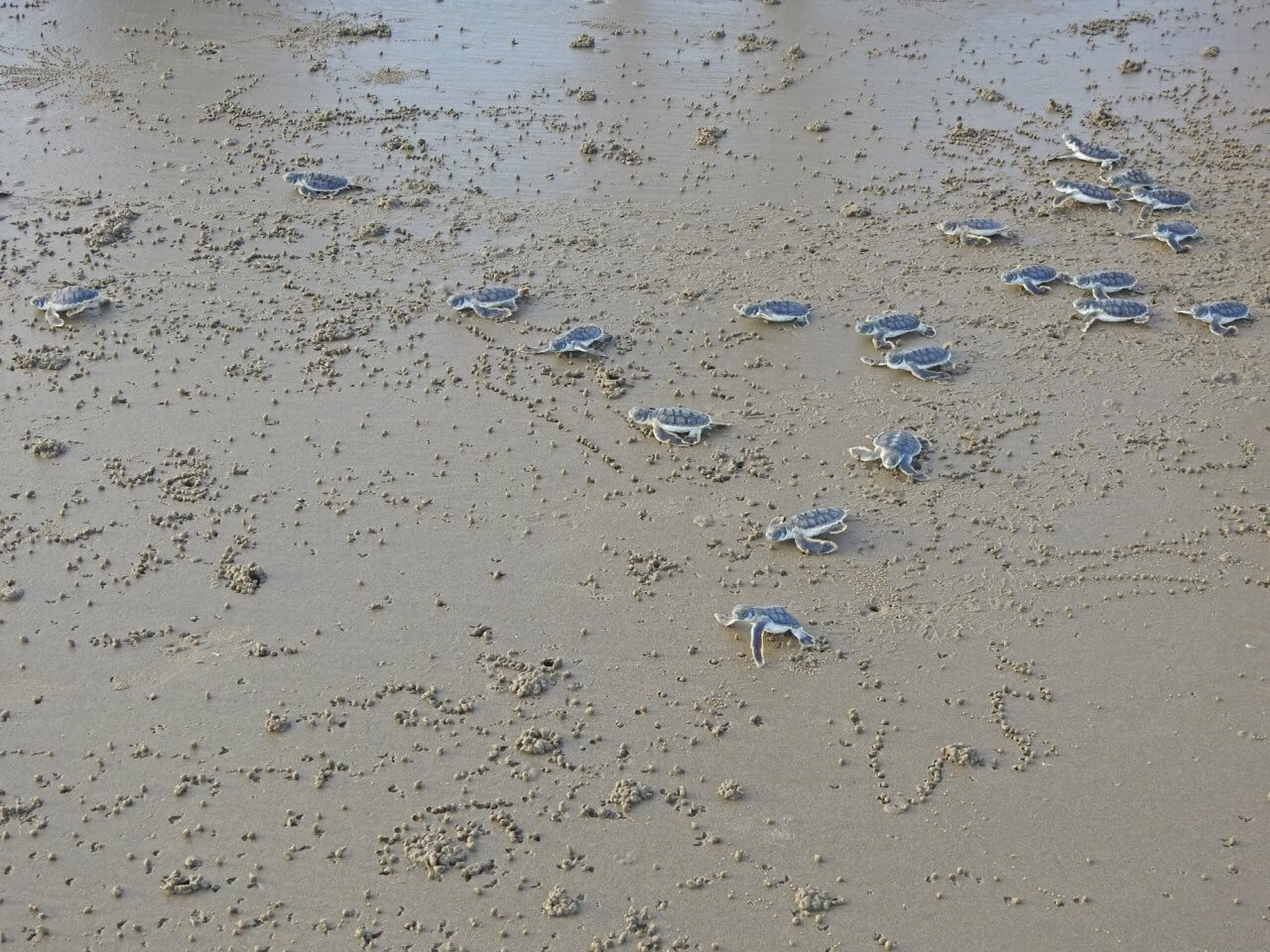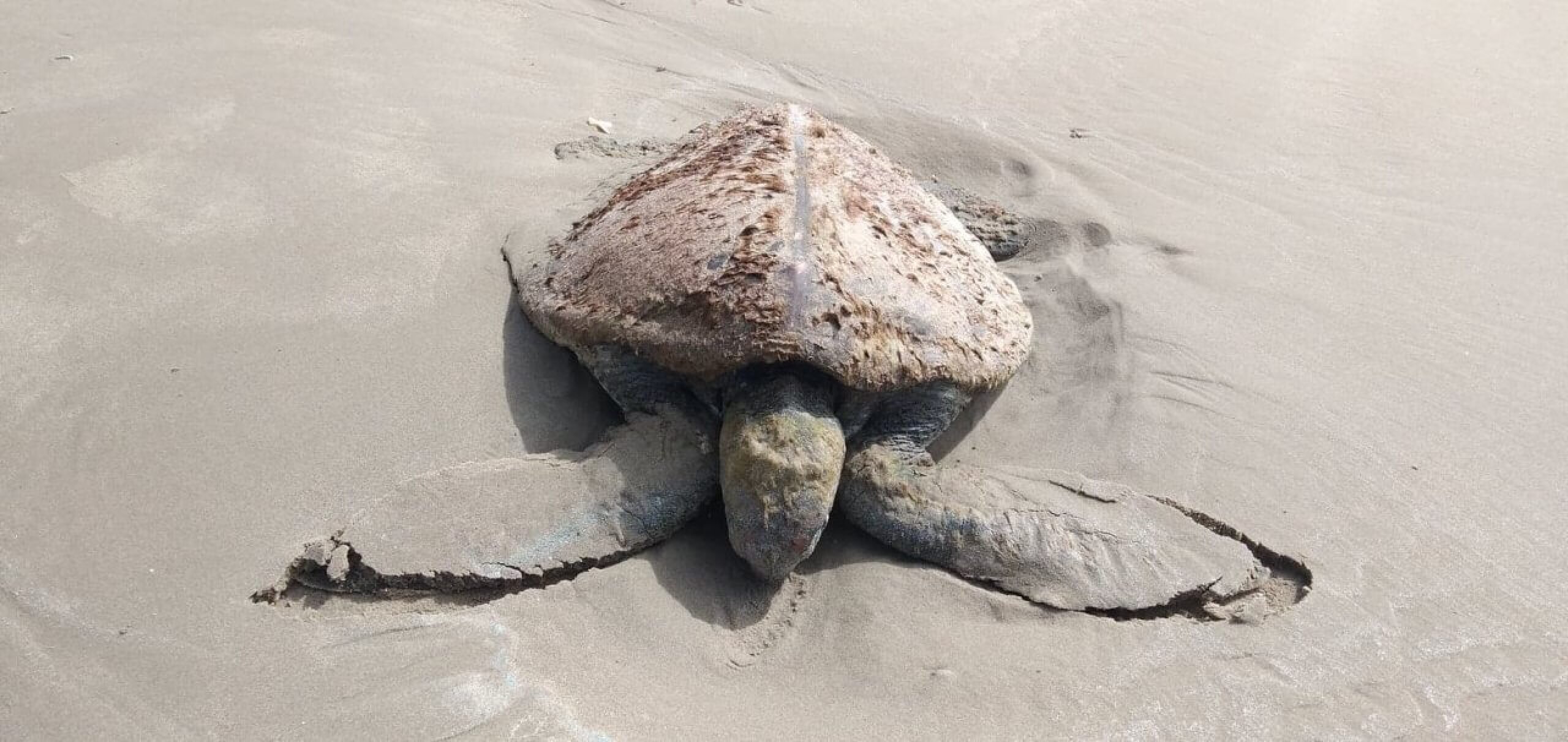FBA Team Turtle CQ
Protecting Queensland's iconic marine turtles
Central Queensland is home to some of the world’s most important nesting sites. Along the Curtis and Capricorn Coasts, three endangered marine turtle species return to nest each year. Giving them a fighting chance is where our team of citizen science volunteers - FBA Team Turtle CQ - comes in.
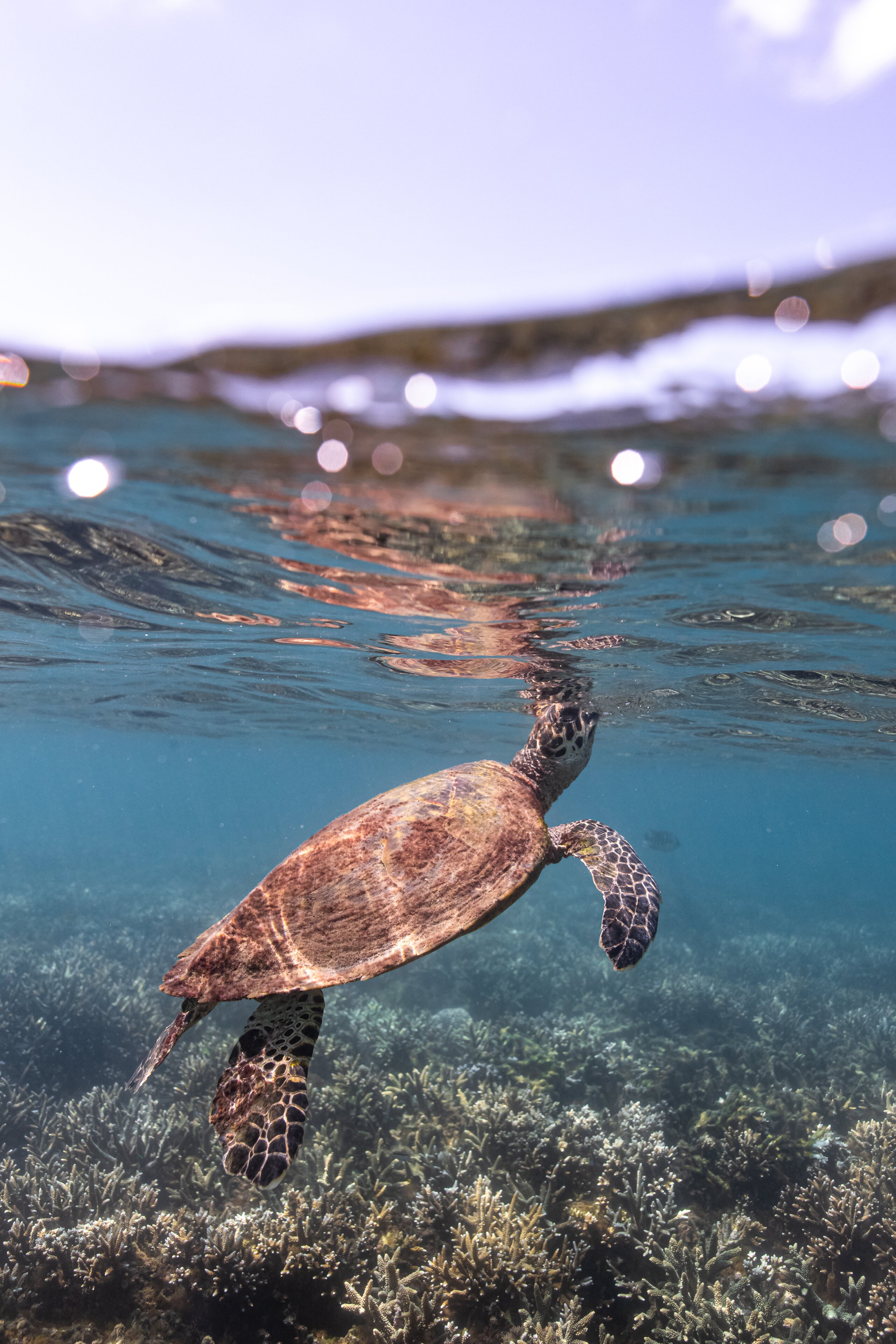
Protecting through monitoring and reporting
Since 2015, FBA’s leading citizen science program has been helping to protect marine turtles. Our passionate volunteers patrol beaches during nesting season, recording vital data that contributes to long-term conservation outcomes.
Each season the team monitors:
Turtle tracks
Nesting attempts
Hatchling success
Threats such as predators, 4WD activity and light pollution
This information deepens our understanding of marine turtle nesting in central Queensland and strengthens conservation efforts across the region.
More than a decade of commitment has made FBA Team Turtle CQ a powerful conservation initiative. Beyond collecting data, our volunteers have built a legacy of community partnership, environmental stewardship and shared purpose. Every footprint in the sand tells a story of care, collaboration and hope for the future of Queensland’s turtles.
A data powerhouse
All data collected feeds into the Queensland Turtle Conservation Program, contributing to more than 50 years of monitoring records—one of the longest-running programs of its kind in the world. This data directly informs local and regional management plans for turtle species, helping shape stronger protections for the future.
Seen a turtle nest? Let us know.
Everyone can play a part in protecting turtles. If you come across a nest or signs of nesting activity along our coastlines, please report it. Your observation could make a vital difference to Team Turtle CQ and the Queensland Turtle Conservation Program.

Report a marine turtle stranding
If you encounter a stranded turtle, call 1300 130 372 and press option 1. A Queensland Government officer will gather details and advise on the right response.
How to tell the difference:
A basking turtle will be alert and responsive, may have mud, algae or barnacles on its shell, can swim, and will usually return to the sea with the next tide.
A stranded turtle may be weak, unresponsive, emaciated, injured, or unable to swim and dive properly. It often carries a thick layer of mud, algae or barnacles.
Do not attempt to return a turtle to the water yourself. If in doubt, contact the hotline immediately, your call could be critical to its survival.
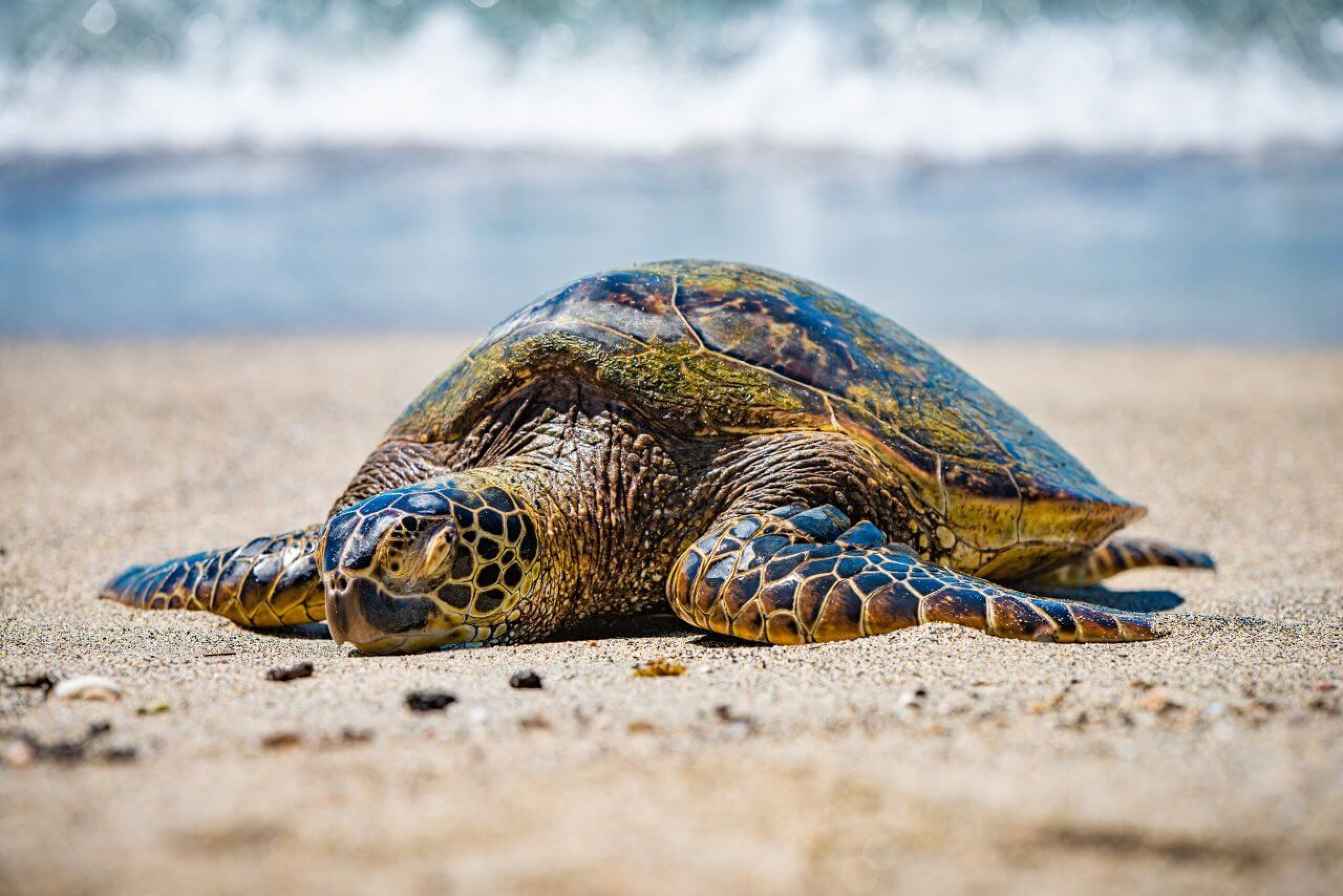
A turtle basking on the beach.
